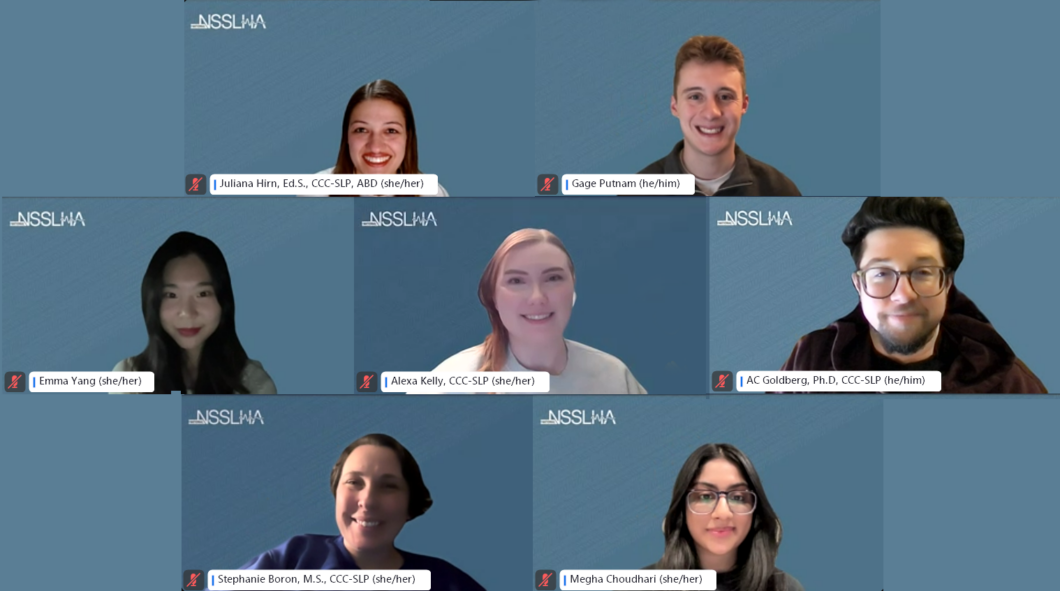Our recent Raw Conversations event brought together experts and students to discuss neurodiversity in communication sciences and disorders (CSD). The conversation explored how neurodiversity is evolving in the field, advocacy efforts, career navigation for neurodivergent professionals, and systemic changes needed for a more inclusive profession. Here are the top takeaways from the discussion. Watch the recording of the full event below:
1. The Evolution and Implementation of Neurodiversity in CSD
Neurodiversity is gaining recognition in CSD, but there’s still work to be done. Panelists highlighted the importance of shifting from a deficit-based model to a strengths-based approach when supporting neurodivergent individuals. This includes rethinking how clinicians assess and provide intervention, ensuring that therapy goals align with an individual’s unique communication style rather than forcing neurotypical norms. Gestalt Language Processing (GLP) is one approach that supports neurodivergent individuals by recognizing their natural language acquisition patterns.
2. Advocacy and Professional Practice Adaptations
Advocacy plays a key role in shaping more inclusive practices. Speakers emphasized that both neurodivergent and neurotypical clinicians must advocate for accommodations, inclusive language, and policies that respect neurodivergent experiences. Adjusting clinical practices—such as offering alternative communication methods and reducing sensory overload in therapy settings—can create more equitable environments for both professionals and clients. The Bemespeech Inclusive Language Bank provides helpful guidance in ensuring respectful and affirming communication.
3. Navigating Your Career as a Neurodivergent CSD Professional
For neurodivergent students and professionals, career navigation can come with unique challenges. Panelists encouraged self-advocacy in the workplace by requesting accommodations that support individual work styles. They also highlighted the importance of seeking mentorship, finding workplaces that prioritize neuroinclusion, and recognizing that neurodivergence can be a professional strength, bringing creativity and unique problem-solving approaches to the field. Juliana Hirn’s journey as an SLP with developmental language disorder (DLD) illustrates the power of self-advocacy and representation in the profession. The Neurodivergent Therapists Directory also highlights professionals who openly identify as neurodivergent, offering a network of support and shared experiences.
4. Systemic Change and Professional Development
Change in the CSD field requires both individual advocacy and broader systemic efforts. Panelists discussed the need for updated policies, inclusive training programs, and continued education on neurodiversity. Institutions and workplaces should prioritize neurodivergent perspectives in decision-making processes, ensuring that diversity isn’t just acknowledged but actively supported through meaningful action. The Double Empathy Problem challenges traditional views on social interaction between neurodivergent and neurotypical individuals, reshaping how professionals approach communication differences. ASHA’s special collection on disability advocacy also provides insights into systemic changes that can make the profession more inclusive.
As the conversation around neurodiversity in CSD continues to evolve, these insights can help shape a more inclusive and supportive field. Whether you’re a student, clinician, or advocate, embracing neurodiversity strengthens the profession and improves outcomes for all individuals. Stay connected with National NSSLHA for more discussions and resources on fostering inclusivity in CSD!

